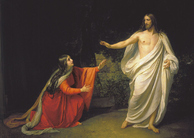Toward a Neurobiological Understanding of Religion: Examining Ritual and the Body
By
2012, Vol. 4 No. 08 | pg. 1/1
KEYWORDS:
One of the numerous working definitions of religion includes "a belief in a divine or superhuman power or powers to be worshipped," and "an expression of such a belief in conduct and ritual" (Johnson, 2012 p. 1). Rituals are generally a religion’s defining characteristic. Further, religion seems to be a uniquely human phenomenon that can foster anything from hope to hate. Why do we have religion, and further, why has the phenomenon of religion and religious ritual persisted despite the conflicts it has spurred time and time again throughout the history of humanity? The issue becomes even more complex when ritual is considered in a bodily context, such as with the Lakota Sundance ritual, which involves what many would categorize as self-harm. The intuitive answers would involve the fostering of a sense of meaning, community, and tradition. Neuropsychological research however has begun to investigate the neurobiological underpinnings of religiosity and the results shed new insight on the roots of religious belief. Religion and religious rituals are intimately intertwined with the human brain, and the two phenomena influence one another. Religion, it seems, could be studied as a biological phenomenon, though whether or not it should be is up for debate. The study of ritual and the body is not new; however, the study of ritual and the brain allows for an even deeper analysis of how and why humans are religious. The study of the specific brain structure and function in “correlation to religious or mystical experiences” is known as neurotheology (Oomen, 2003 p.617). This paper will define these “experiences” as rituals. One definition of ritual is that it is “centered on the body” (Johnson, 2012). Traditionally, however, rituals have been associated with a separation of the body from the mind, as part of a liminal moment (Rayburn & Richmond, 2002; Johnson, 2012). Research in the field of neurotheology is beginning to show that while ritual may manifest in this so called separation, the two are actually interdependent in the “crossing over” experience that defines ritual.The actual practice of ritual itself may not be biological, but the impact both long and short term is something that can be understood biologically and theologically. Dr. Andrew Newberg, a pioneer in the field has compared the brainwave activity of individuals meditating, or engaged in prayer that leads to speaking in tongues to when they are at rest, and the results are striking. Though meditation and speaking in tongues seem like two drastically different levels of arousal, the analysis of brain function during these activities reveal surprisingly similar results (Conan, 2010). On a fundamental level, it seems, that regardless of the ritual, our brains, and therefore bodies, are having similar reactions begging the question of the universality of rituals. Examining this concept from a neurological point of view provides scientific evidence for this idea. Neurological data collected during religious activity shows a decrease of activity in the parietal lobe. The parietal lobe is responsible for the processing of sensory stimuli, which “helps us to create our sense of self and how we relate that self to the world” (Conan, 2010). Thus, we have neurological evidence for an actual decrease in sense of our immediate surroundings. In other words, the liminal moment or transition between states that is implicated in religion is facilitated by particular brain activity—or inactivity as the case may be. The absorption required in the practice of a ritual also seems to be regulated by the brain. While the parietal lobe sees a decrease in activity, the frontal lobe, responsible for focus and concentration, sees an increase in activity (Johnson, 2007). The temporal lobe also sees activation. This is important because temporal lobe epilepsy is often characterized by “religious experiences” (Persinger,1983). An application of this biological theory can be seen in the study of shamanism. Shamanism focuses on alternate states of consciousness or ASC's (Winkelman, 2002). It should be noted that the ASC’s discussed here are not induced by ingestion of any type of external mind altering substance. Skepticism about the altered states under which Shamans presume to treat patients is common, however, based on the neurological evidence it seems that these states have been achieved genuinely for quite some time. Further, Shamanistic visions, a component of ASCs are, according to Michael Winkelman (2002) a “natural brain phenomenon” that involves suppression of the visual cortex. Again this is in accord with the suppression of the parietal lobe where sensory information is processed. Further, hallucinations are often considered symptomatic with regard to mental illness such as schizophrenia. The amygdala is the region of the brain that is most correlated with “unusual mental phenomena” and dissociative or “out-of-body” states, as well as emotional response (Joseph, 2002). The amygdala is also highly active during these religious experiences. The altered states of consciousness that Shamanistic and other religious rituals seek to achieve may not be simply religious, or further the hoax that people often suspect. In fact, it seems that humans may have the innate biological capacity to disengage from their own reality and enter into the altered state in which religious experience occurs. Beyond shamanistic rituals, researchers have determined that any type of ritual—religious or not, results in a state of pleasure and even a sense of disengagement. Ritual behavior, in this context is defined as a behavior or sequence of behaviors that are “structured or patterned,” and “[recur] in the same or nearly same form with some regularity” (d’Aquili,1983 p.261). This is in keeping with Christopher Paul Johnson’s definition of ritual as a “repeated action” that “follows a model” (2012). The nervous system activity responsible for this emotional state is similar in animals exposed to “repetitive rhythmic stimuli,” which in humans, often presents as ritual activity (d’Aquili, 1983. p.262). Findings from neurotheological studies of course, have greater implications that simply awareness of brain activity. Numerous studies have shown that happiness and life satisfaction have a strong positive correlation with “religious affiliation and frequency of worship attendance” (Myers & Diener, 1995 p.16). What is it about religious activity that makes this the case? Dr. Andrew Newberg posits that the pleasurable states resulting from brain activity associated with religion actually have long-term effects on our mental health and quality of life (Conan, 2010). Dr. Newberg studied the impact of Kirtan Kriya meditation on older adults with Alzheimer’s, and conducted brain scans on day one. Eight weeks later, brains were scanned again and the parts of the brain implicated with Alzheimer’s disease actually appeared different in the brain scans. Perhaps even more importantly, the subjects of this study felt better and had significantly improved performance on memorization tasks (Conan, 2010). In similar follow up studies, anxiety and depression seemed to be reduced even when the individual was at rest and not engaged in religious practice (Conan, 2010). As noted before, the amygdala, which is largely responsible for emotional response is activated during religious activity and as a result of this activity, works to rein in our emotional response even during day-to-day pursuits (Conan, 2010). This may provide a biological explanation for why highly religious people tend to have lower rates of mental illness (Myers & Diener, 1995). Neurotheology has certainly added another dimension to the study of religion. But what does it mean for the concept, practice, and phenomena of religion? One view is that “the most direct implication of [neurotheology] research [is] that religious ecstasy is an illusion” (Johnson, 2007). While this is certainly one way to view the issue, this conclusion may be a bit extreme. Religion is often about communicating with a higher power, and while the states under which many claim to do so can be explained by biology, they do not by any means make those experiences an illusion. If anything, the concrete scientific proof that these rituals and their associated altered states are having an affect makes them more real. Interestingly, one of Andrew Newberg’s studies involved bringing in atheists and having them contemplate God. They had a significantly different brain response than religious individuals who performed the same task (Conan, 2010). Therefore, the findings of neurotheology do not necessarily take away from the legitimacy of religion, but rather add an additional perspective to how we interpret and function in our world and in ourselves. Newberg notes that for neurotheology to “really work as a field” it must be open and to both the scientific and theological perspectives (Conan, 2010). Persinger (1983) agrees that the relationship between religious experience and certain brain activities “validates neither an atheistic nor a theistic conclusion” The ways in which neurotheological research can be used to interpret religion, ritual, and the body are endless. Regardless, these scientific results do indicate the legitimacy of crossing a liminal threshold into another state in the process of a ritual, at least to an extent. The findings do not indicate the field’s attitudes or opinions about religion, but open students of religion, religious leaders, and non-believers alike to another way in which to interpret our world and ourselves. The biological evidence could be undermining religion, but on the other hand, may also serve as evidence for the real and salient impact that religion and ritual have on the body. ReferencesConan,N. (2010, December 15). Neurotheology: This is Your Brain on Religion. In N. Conan, (Host), Talk of the Nation. Philadelphia, PA: National Public Radio. Retrieved from http://www.npr.org D'Aquili, E.G (1983). The Myth-Ritual Complex: A Biogenetic Structural Analysis. Zygon: Journal of Religion and Science, 18 247-269. Johnson, G. (2007, April 26). God is in the Dendrites. Slate Magazine. Retrieved from http://www.slate.com/articles/life/brains/2007/04/god_is_in_the_dendrites.html Johnson, C.P. "Religion" is, does, Or Consists of X: 50 Notions of Religion. ---. Ritual. Lecture ed., 2012. Print. Joseph, R. (2002). Dreams, Spirits, and the Soul. In Joseph, R. (Ed.) NeuroTheology: Brain, Science, Spirituality, Religious Experience (pp. 411-425) San Jose, CA: University Press. Myers, D.G., & Diener, E. (1995) Who is Happy? Psychological Science 6(1), 10-19. Oomen, Palmyre. Neurotheology. In The Encyclopedia of Religion (Vol. 2, pp. 617-618). New York, NY: Macmillan Reference. Persinger, M.A. (1983) Religious and Mystical Experiences as Artifacts of Temporal Lobe Function: A General Hypothesis. Perceptual and Motor Skills, 57, 1255-1262. Rayburn, C.A., & Richmond, L.J. (2002) Theobiology: Interfacing Theology and Science. American Behavioral Scientist 45(12), 1793-1811. Winkelman, M. (2002). Shamanism as Neurotheology and Evolutionary Psychology. American Behavioral Scientist 45(12), 1875-1887. Suggested Reading from Inquiries Journal
Inquiries Journal provides undergraduate and graduate students around the world a platform for the wide dissemination of academic work over a range of core disciplines. Representing the work of students from hundreds of institutions around the globe, Inquiries Journal's large database of academic articles is completely free. Learn more | Blog | Submit Latest in Theology |
















